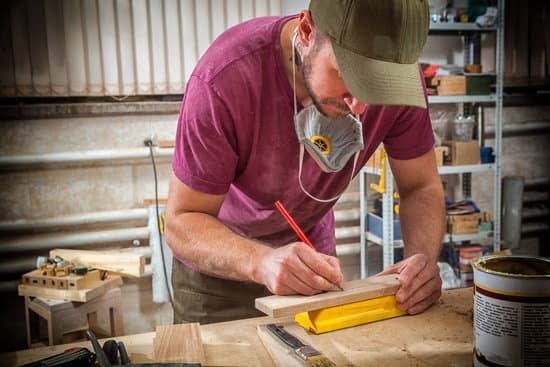Introduction
Metal accents are any elements of metal that are added to woodworking projects for decoration or functionality. This could include things like hardware, fasteners or decorative elements such as hinges, drawer pulls, and latches. Metal accents add an extra level of character to a project by adding some interest and contrast.
In addition to aesthetics, metal accents can also be used functionally in woodworking projects because they tend to be sturdier than wooden components over time. They offer greater stability, as well as better corrosion resistance compared to woodworking elements on their own. Metal accents can also help make the project easier to use since they tend to have smoother surfaces than natural wood that allow people to grip and move the piece more easily.
Exploring the Different Types of Metal Accents Available
When it comes to woodworking, metal accents can really enhance the look and feel of a project. From functional components like hinges and railings to decorative features like small knobs or handles, there are plenty of potential additions that can take the overall aesthetics of a piece to the next level. Depending on the look you’re going for, there are many different types of metal which work great for these accents. Iron is a popular choice due to its strength and durability. Brass adds an antique feel with its warm shade and sleek finish while copper offers detail with its iridescent effect. For more modern designs, stainless steel stands out as it has no cap in terms of its design range or aesthetic appeal. If your piece requires functional details then other metals such as zinc or cast aluminum might be worth considering due to their corrosion-resistant properties. No matter which metal you choose for your project, adding accents will bring a unique style that will help turn even the simplest pieces into something special.
How to Select the Right Metal Accent for Your Woodworking Project
Selecting the right metal accent for your woodworking project is an important decision that you should give some thought to. Different types of metal will offer different effects in your finished piece, from a unique look to something more ornate and decorative. Consider the function of the project and how the metal accents will add to it. For example, brass can be used for a sturdy surface, while copper provides a more rustic feel. Other materials such as stainless steel may be selected if you are looking for a very modern or contemporary style of finish.
When it comes to hardware, such as handles and hinges, think about how they will interact with the wood and how they will fit into your design scheme. Make sure they are of good quality, as this is often where the true beauty lies in any woodworking project. If you want something a bit more eye-catching, perhaps try looking into aluminum pieces that can easily stand out against a wooden backdrop. In addition to whatever material you choose, research what type of finish is available so that they match and complement each other perfectly in your design plan.
Techniques for Installing and Working With Metal Accents
Metal accents are an important way to bring a unique and classic look to your woodworking projects. Installing metal accents is not hard, but there are a few techniques you will want to use in order to ensure the best possible results.
Start by making all of your cuts using the standard 90-degree angle when it comes to aligning with the wood you’re working on. To complete this process, use a fence post with clamps attached, which will help you make sure that everything is cut perfectly and aligned without any issues.
Next, use a countersink drill bit when attaching the metal accent pieces as they can easily become damaged due to simple friction. This ensures proper installation and prevents damage to the piece itself – which may be expensive or hard to replace otherwise. Be sure not to force anything; rather take care and take your time when drilling so that each hole is properly created at an even depth for optimal security.
If painting or staining is part of your project with metal accents, prepare the surface for either by making sure it is clean and free from any dirt, dust or debris that could cause problems later on down the road. Sandpaper should be used in order to further smooth out any indentations or unevenness after cutting for a streamlined finish before applying any paint or coatings. Finally, make sure any screws you use with metal accents should also be countersunk so that they won’t interfere with the visual look in anyway.
Incorporating Metal Accents into Your Design For Optimal Aesthetics
The addition of metal accents to woodworking projects gives a unique finished look that can’t be obtained any other way. Whether it is a particularly intricate inlay or an inconspicuous trim around the edge, these small additions can give your piece incredible depth and dimension.
There are multiple ways to incorporate metal into your design, including welding, riveting, brazing and soldering. Each method offers a slightly different finish; for instance, welding gives you a sleeker look than brazing if you’re looking to add ornate patterns or decorative designs to your artwork.
If you’re looking for a more aesthetically pleasing transition between the metal and wood, consider using surface treatments like patinas or enamels; this not only adds appealing color but also seals the components to prevent decay from rainwater or the sun’s UV rays. Alternatively, you could choose leather accents instead of metal for softer yet still durable joinery.
Regardless of how you decide to incorporate metal into your design, it’s important that you use quality materials that are designed specifically for woodworking in order to get optimal visual results with minimal maintenance needs over time. For instance, brass and stainless steel pieces offer exceptional corrosion-resistance qualities which make them particularly ideal for outdoor uses. Make sure to look out for alloys like nickel bronze which provide superior strength as well as unparalleled stylistic features such as matte-black finishes and ornamental etching techniques.
Finishing Touches to Maximize The Beauty of Your Metal Accents
The addition of metal accents can add a special touch to your woodworking projects and make them stand out. Metal accents can provide the perfect finishing touches to furniture, cabinetry and other decorative items, while also increasing its durability and strength. When selecting metal accents for your project, choose pieces that complement the overall style of your décor. For example, opting for brushed stainless steel accents on a contemporary design will help bring out the modern flair you’re looking for.
To maximize the beauty of your metal accents, there are several steps you can take. First, make sure you use only high-quality materials, such as stainless steel or aluminum, so that your metal pieces will not corrode over time. Additionally, be sure to sand any rough edges before painting or coating the piece with a protective topcoat finish. After painting or coating the piece, apply a layer of sealant or lacquer to ensure that it lasts many years without showing signs of wear and tear. If you go with a rustic look, consider antiquing” the metal accent by brushing with steel wool to give it an aged appearance. Finally, play around with textures and colors that work well together in order to create interesting contrasts between both materials.
Safety Precautions to Consider When Working With Metal Accents
When working with metal accents, it is important to always put safety first. It is best to wear protective gloves and goggles to protect eyes and hands from potential hazards. Always ensure that any chemicals used when cleaning or polishing metal are disposed of safely. Additionally, be sure that any tools being used for cutting, drilling or grinding are in good working order and have been sharpened appropriately. Make sure that the work area is well ventilated to avoid any observed fumes from solvents or hazardous materials, and use a respirator if necessary. When using a saw or drill, always remain attentive of the spinning blade at all times to prevent unexpected mishaps. Finally, take the time to research any unfamiliar processes related to working with metal elements before starting your project for successful results and added protection for yourself.
Conclusion
Adding metal accents to woodworking projects is a great way to make them stand out from the rest. These accents can truly take your craftsmanship to the next level and show off your attention to detail. You can customize the look of your cabinets, furniture, boxes, and more with metal details. Metal accent pieces naturally elevate the design and style of any woodworking project, adding an extra layer of sophistication that would otherwise be missing.
When it comes unlock the true potential of your woodworking projects, don’t overlook metal accents. Though they may seem like a small aspect at first glance, metal additions serve to enhance the beauty and value of your work without taking away from its originality. Plus, there are various options available when it comes to selecting just the right color or finish for your project! With customization in mind and careful planning ahead, metal accents can be a wonderful addition to any woodworking project, making it even more unique than before.

Hi everyone! I’m a woodworker and blogger, and this is my woodworking blog. In my blog, I share tips and tricks for woodworkers of all skill levels, as well as project ideas that you can try yourself.





